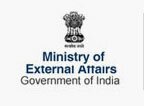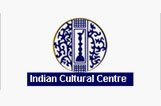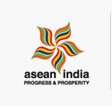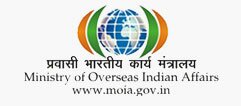Country BriefHISTORYThe earliest inhabitants of the present day Malaysia are Orang Asli of the Peninsula, Penan of Sarawak and Rungus of Sabah whose presence goes back approximately 5000 years. The Orang Asli, the Malays, and the indigenous peoples of Sabah and Sarawak are collectively called Bumiputeras – “Sons of the Soil”. Although there is evidence of contacts with the Indian subcontinent as early as the sixth century BC, regular contacts with China and India were established only around the first century BC, leading to a major impact on the region, of the Hindu-Buddhist elements of Indian culture. With the arrival of Islam in the 13-14th centuries, brought primarily by Indian and Arab traders, Hindu/Buddhist influence declined. With the conversion of Parameswara, the Malay-Hindu ruler of the Melaka Sultanate to Islam around 1400, Islam became a major influence on the peninsula. Melaka was occupied by the Portuguese in 1511, marking the ascension of European power in the region. Dutch-Portuguese rivalry for dominance in the region was supplanted by the intrusion of British power at the end of the 18th century which brought the resources and organization of the Industrial Revolution to Malaya. The Japanese conquest of Malaya and British Borneo during the Second World War, and the surrender of the British at Singapore in early 1942, shattered the myth of Western colonial supremacy and unleashed the forces of incipient nationalism, a process considerably hastened by the inspiring exhortations of Subash Chandra Bose during his several visits to Malaysia during Japanese occupation. By the Agreement of 1948, the British committed themselves to preparing for Malaysian independence. Under the twin pressure of a communist insurgency and the development of a strong Malay nationalist movement (represented by the United Malays National Organisation (UMNO)), the British introduced elections. The successful establishment of alliance between UMNO, Malaysian Chinese Association and Malaysian Indian Congress and its over whelming victory in the first federal elections in 1955 paved the way for independence finally on August 31, 1957. At the instance of the first Prime Minister of independent Malaysia, Tunku Abdul Rahman, the Federation of Malaysia consisting of Peninsular Malaysia, Singapore, Sabah and Sarawak was formed in 1963. However, in 1965 Singapore separated from the Federation. Tun Abdul Razak succeeded Tunku Abdul Rahman as Prime Minister in 1970. Tun Hussein Onn became PM in 1976 following the death of Tun Abdul Razak. Dr. Mahathir Mohamad became the Prime Minister in 1981. After serving for 22 years, the Prime Ministership was handed over to Dato’ Seri Abdullah Ahmad Badawi on October 31, 2003. Following a massive mandate favoring Barisan Nasional in the 11th general election, Dato’ Seri Abdullah Ahmad Badawi was sworn in as Prime Minister again on March 22, 2004. In the elections held in march 2008, Barisan Nasional once again secured necessary majority for a fresh five-year mandate with Dato’ Seri Abdullah Ahmad Badawi as the Prime Minister. GEOGRAPHY, LOCATION & CLIMATE Malaysia comprises the Malay Peninsula and the States of Sabah and Sarawak on the Island of Kalimantan (Borneo). Peninsular Malaysia lies to the south of Thailand and covers an area of 130,000 sq.kms., while Sabah and Sarawak, totalling about 199,000 sq.kms. lie on the northern and north-western part of the Island of Kalimantan. Wedged in between the eastern Malaysian States is the oil-rich Kingdom of Brunei, formerly a British protectorate and independent since 1984. Singapore, south of Peninsular Malaysia, which formed part of Malaysia from 1963, was removed from the Malaysian Federation and became an independent nation in 1965. The Federation of Malaysia consists of 13 States: Perlis, Kedah, Penang, Perak, Selangor, Negeri Sembilan, Melaka, Johor, Pahang, Terengganu, Kelantan, Sarawak and Sabah. In nine of these States, the Head of State is a hereditary ruler. Each State has its own constitution, a Council of State or Cabinet with executive authority, and a legislature that deals with matters not reserved for the Federal Parliament. There are also the three Federal Territories Kuala Lumpur, Labuan, (an island off Sabah, which is being developed as an off-base financial centre) and Putrajaya, the Administrative Capital of Malaysia. SOCIETY According to the Constitution, Islam is the religion of the Malaysian Federation. However, the Constitution also provides that every person has the right to profess and practise his own religion. The right to propagate other religions among Muslims is not permitted by law. Islam is primarily identified with the Malays although there are many Indian, Chinese, Kadazan and other Muslims. There is no pan-Malaysian Head of Islam. Each hereditary Malay Ruler is head of Islam in his State. The Yang Di-Pertuan Agong (the King) is Head of Islam in his own State and also in the States of Melaka, Penang, the Federal Territories, Sabah and Sarawak. Other religions practised in Malaysia are Buddhism, Taoism, Hinduism, Sikhism and Christianity. There are over 1000 Hindu temples and about 100 Sikh Gurudwaras in Malaysia. Bahasa Malayu is the national language established under article 152 of the Constitution which also safeguards other languages by stipulating that no person may be prohibited or prevented from using (except for official purposes) or from teaching or learning any other language. Bahasa Malayu must be used for all official purposes, by Federal and State Governments and by all authorities and statutory bodies. Chinese and Tamil are also taught in schools. Although English is widely used and is the language of commerce, knowledge of Bahasa is an asset. It is relatively easy to learn. GOVERNMENT Malaysia has a unique system of constitutional monarchy giving each of the nine State Rulers a chance to be King for five years in rotation. The rotation of the post was the brainchild of Tunku Abdul Rahman, the first Prime Minister, when Malaysia gained independence in 1957. The Yang-di-Pertuan Agong is elected by the Conference of the Nine Rulers. He holds office for five years or until his resignation or death. The Sultan of Terengganu His Majesty Al-Wathiqu Billah Tuanku Mizan Zainal Abidin ibni Al-Marhum Sultan Mahmud Al-Muktafi Billah Shah, has been elected as the new Yang di-Pertuan Agong XIII, King of Malaysia, for a five year term on December 13, 2006 by the Conference of Rulers. The Government is based on parliamentary democracy. The bicameral parliament consists of a Senate (70 members) and a House of Representatives (222 members). Elections to the lower House are held once every five years on the basis of universal adult suffrage. The last general elections were held on March 8, 2008. Malaysian political and socio-economic life is based on ethnicity, recognizing the existence of three clear racial groups - Malays, Chinese, Indian. The Malay-Chinese race riots of 1969 were followed by the New Economic Policy (NEP) announced in 1970. The NEP provides for enhancing Bumiputera share in national equity (ownership of corporate capital) from 2% in 1971 to 30% by 1990. The NEP was succeeded by the New Development Policy (NDP) 1991-2000 and now the New Vision Policy (NVP) 2001-2010 has been announced. NVP aims at making the economy more knowledge- based. Officially, the Bumiputera's share in national equity had increased to about 20% by 2000. The share of the Chinese is over 38% with 33% held by foreigners and 1.5% by Indians. The NVP envisages doubling of the Indian share to 3%. The ruling coalition, presently called the Barisan Nasional (BN) (National Front) has governed Malaysia continuously since Independence, and presently rules in the 7 states. The BN comprises United Malay National Organisation (UMNO), Malaysian Chinese Association (MCA), Malaysian Indian Congress (MIC) and 12 other smaller parties while Indian Progressive Front (IPF) supports it from outside. ECONOMY During 1998-2000, Malaysia’s economy contracted by 7.5% mainly due to South East Asian financial crisis. The policy response undertaken by Malaysia following the outbreak of the Asian crisis can be categorized into three phases. During the first phase from September to December 1997, demand management policies were implemented to reduce the current account deficit, address the high leverage of the private sector and the strong credit growth. In the second phase during the period January to April 1998, fiscal policy was relaxed to allow selective increases in fiscal spending to strengthen the social safety net to protect the more vulnerable segments of society. The third phase of policy responses since May 1998 focused on minimizing the severity of the economic downturn. The positive effects achieved on the inflation front and the significant improvement in the current account provided the authorities with some room to ease monetary policy. The pegging of the Ringgit to the US Dollar was one of the significant measures introduced. As per the exchange control measures imposed, the main thrust was directed towards reducing the ability of non-residents to engage in Ringgit transactions among themselves; requiring imports and exports of goods and services to be settled in foreign currencies; discouraging short-term capital inflows by requiring inflows of capital to remain in the country for a period of 12 months; and tightening the rules on investment abroad by Malaysians. 17. Malaysia registered a GDP of US$ 184 billion in 2007. Malaysia's exports in 2007 were US $ 173.60 billion and imports were US$ 135 billion. The single largest item of exports is electrical and electronics (such as computer peripherals and integrated circuits) which amount to 50.2% of total exports with palm oil at 6.1%. Among its mineral resources, tin, petroleum and natural gas play a major role in the Malaysian economy. Other minerals include copper, gold, bauxite, iron-ore and coal. Annual indicators
|
Malaysia File
|





